California Fire threatens PanAmerican Seed
You’ve seen the dramatic nighttime images of the California wildfires on the news; some of my coworkers within Ball Horticultural saw that live from their back porches! In fact, PanAmerican Seed’s Santa Paula facility found itself less than a mile from the so-called Thomas fire, which has turned into the fourth biggest since 1932, when the state started keeping track.

Reid Snyder’s PanAmerican’s Global Product Manager, gave me a first-hand report and provided the photos you see here. He says the fire started in the after-work hours on Monday, December 4, about five miles north of the greenhouse. By dawn Tuesday, it had destroyed more than 100 structures and was spreading from house to house in Ventura and Santa Paula.
“The problem was the winds,” says Reid. “The Santa Anas were blowing 50-60 miles per hour, so hot embers would blow from one house to the next.”
The fire burned south to within a mile of the facility, but lemon groves along Foothill Road stopped the fire from coming closer. Interestingly, the weather wasn’t hot; Reid said it was in the 50s, but the humidity was in the single digits.
 The fire as see from breeder Blair Winner's house.
The fire as see from breeder Blair Winner's house.
PanAmerican was never under a mandatory evacuation order. They lost power for half a day Tuesday, and a small crew came in to maintain plants and vent the greenhouse while the majority of employees stayed home to look out for their own property. Some were evacuated, including Reid, but thankfully, nobody suffered any damage or loss. By the end of last week, the fire was no longer a threat, but the smoke was still thick, he says.

Fire damage in San Diego county
My reporter on the southern fire scene—the “Lilac” fire—is my friend Nicole Jackson, formerly of Plug Connection and now a sales rep for T&R Lumber Company (distributor of wood shipping racks, tree boxes, stakes, nursery cans and the like). Nicole provided daily updates on Facebook that were of great help to those wondering about conditions in the far south of the state where there’s so much horticulture. I asked her to sum up the fire situation around her:
It was a really close call for many nurseries here. Many nurseries are self-insured, and in the case of fire, it can be a total loss for growers. Fortunately, electricity was only out for about two days, and most growers were able to negotiate their way on to farms by Saturday to irrigate.
Thursday evening (December 7), the prediction was that the winds were going to die down, but then pick back up Saturday and Sunday. The scenario painted by CalFire was the Lilac Fire would burn to the coast via Camp Pendelton. That scenerio placed Olive Hill, Color Spot, DM Color, Palm Acres, Armstrong Growers, Sunlet Nursery, Pardee Nursery and many others in the general path. What actually happened vs. what was predicted was the difference between major and limited losses. The winds died down sooner than predicted and they never really picked back up. It’s always sad when natural disaster impacts a community, but I think overall, most growers felt very lucky it was not much worse.
Not everyone was spared, however. Nicole had heard that Yatsuda Nursery’s Bonsall growing grounds were destroyed, as was Rainforest Flora. A quick Google check confirmed the destruction at Rainforest, an 8-acre, 40-year-old business owned by Paul Isley and Jerry Robinson. He estimates the loss to be in the millions of dollars. Several employees who lived onsite lost everything.
You can read the full story HERE.
If you’d like to help Rainforest and their staff, there’s a gofundme page: www.gofundme.com/LilacNursery

Cultivate’s New registration process (including hotels)
Mark your calendar for February 12 if you want the best shot at getting your prefered accommodations for AmericanHort’s Cultivate’18. That's the day registration opens, and that is also when they'll start assigning hotel booking slots.
In a nutshell, Earlybird registration is anytime between February 12 and 23. If you get your show registration in by then, you will receive an assigned day (from March 6 to 14) on which you can book your hotel room(s). Which day you happen to get will be based upon your AmericanHort membership status or exhibitor status.
For the earliest-possible shot at booking your hotel, it behooves you to be a premium member of AmericanHort (which costs between $1,195 and $3,495, depending on company size). After that, priority goes to the top 50 exhibitors based on sponsorship and booth size/expenditure. After that comes regular AmericanHort members, and lastly non-members. With rooms at the closest hotels at a premium, you’ll want to do all you can to boost your chance of getting an early booking date!
Of course, after March 15, everyone can register and book hotels (room prices will be the same), it might just be more challenging to get one of the preferred close hotels, or a big block of rooms if you’re attending with a group.
For details, go to http://cultivate18.org/.

It’s Young Grower Award time!
Speaking of Cultivate’18, that’s the spot where we will once again announce the winners of the GrowerTalks/Dümmen Orange Young Grower Award. This high honor goes to an under-35 grower who exemplified the kind of passion and enthusiasm that this industry most values. It’s not easy to be one of the three finalists, let alone win, but the journey starts with filling out an application, which you can find HERE (hint from a preliminary judge: include as much detail as possible!).
Three finalists will be our guest at Cultivate’18, and will dine with our esteemed panel of judges before strolling to AmericanHort’s Unplugged event for the big announcement. The winner will be featured on the cover of the September ’18 issue of GrowerTalks.
Interested yourself, or know someone you want to nominate? Then get to it!
Oh, there’s a Green Profit/Dümmen Orange Young Retailer Award for you retailers. It’s just as cool and just as big an honor.
Your pet plants
A couple weeks ago, I got onto the topic of pet plants. My belief is, if non-gardeners knew that you could buy a relatively inexpensive houseplant and have it last for years or even decades, and become a cherished member of the family, they might be more inclined to give one a try. I asked you to share your pet plants, and you did! Here are a few, in ascending order of age:
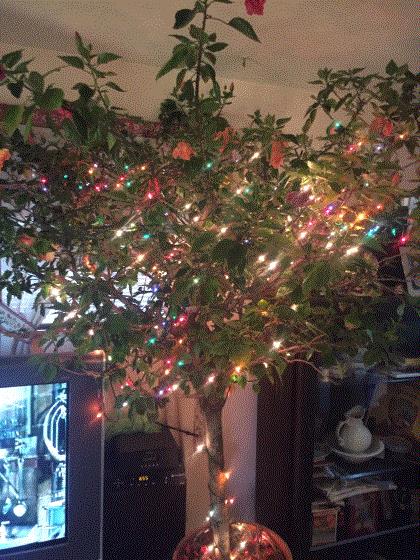
Dave Redoutey of Bordine’s Farm says, “I have a hibiscus tree that sported two colors that is over 25 years old. When I bring it in for winter here in Michigan, we decorate it and it becomes the Christmas tree.”
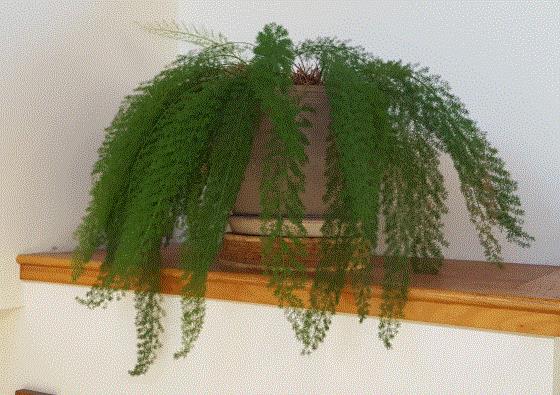
Jim Jonkers of Jonkers Garden in Holland, Michigan, wrote, “I gave this Asparagus meyerii (fox tail fern) to my friend John Verhagen 44 years ago as a wedding present.”
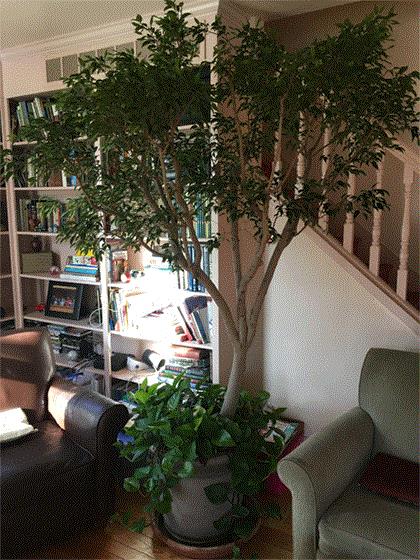
Proven Winners’ John Gaydos sent me this picture of his pet Ficus phillippensis nuda with its story:
“A very long time ago, I worked for Mercer Greenhouses in Fredonia, Pennsylvania. Part of the business was a division that installed and managed interior plantscapes in downtown Pittsburgh. This particular fig was part of large planting in the penthouse of the U.S. Steel Building. It resided in the penthouse for a number of years; however, it developed a scale infestation and had to be removed. I brought it home to my apartment and presented my new wife with a sticky twig of plant with very few leaves. Truly a 'Charlie Brown' houseplant if there ever was one. Well, after 47 years, the fig and the marriage are still alive and thriving; however the joke on the home front is, 'If the fig dies, look out!' The fig spends the summer outside in full sun and is tempered for its return to the house starting in late August. Normally you see Ficus phillippensis used as bonsai specimens; I have not seen another in tree form, used as a houseplant, since I left Pennsylvania.”

Cookie Ballard's ponytail palm looks pretty good for 50 years old!
“I inherited it from my mother, who passed away in 2004. I’m quite sure she had started it from a seed, or perhaps a tiny 2-in. pot. I was out of the country, and when I came home in 1975, it was in her living room, about 7-ft. tall. It is now residing in a friend’s house, which has a cathedral ceiling, as it outgrew my 14-ft. tall greenhouse. Now, what do I do when it outgrows my friend’s house?”
Next time: The two oldest pet plants!

Propagation media webinar coming Tuesday
Don’t forget the upcoming can’t-miss webinar, “Choosing and Using Propagation Media.”

It’s slated for Tuesday, December 19, at 1 p.m. EST, with guest expert Dr. Vijay Rapaka of Oasis Grower Solutions. Vijay will give you the details on all three types of propagation media: engineered media (“foam”), stabilized media or (“paper plugs”) and bonded media (“glue plugs”). What does each offer? Why choose one over the other? Vijay will offer some tips and tricks for maximizing your rooting, and he’ll go into extra depth about Oasis’ newest propagation media, Terra Plug.
To sign up for this free webinar, click HERE.
A special thanks to sponsor Oasis Grower Solutions.
A sneak peek at a new vinca

While visiting Ball Australia, I saw a way-cool vinca on display called Tattoo. I asked about it, and found out it will be launched by PanAmerican Seed here at Spring Trials. It’s named Tattoo for its black, rather than white center, and unique multihued flowers. I’m told there are four colors: Raspberry, Papaya, Tangerine and Black Cherry. It’s suggested more for pots than the landscape, to best show off the individual flowers.
This aloe is so cool, they named it twice
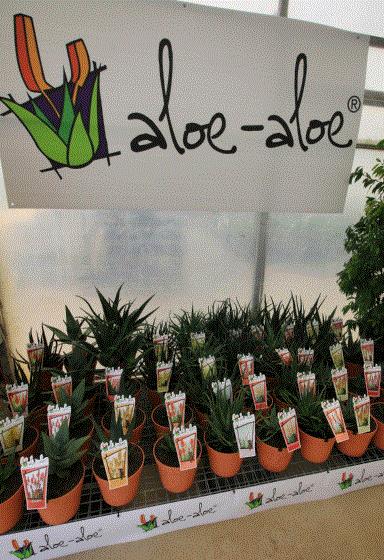
Aloe-Aloe is a brand of blooming aloes by Australian Michael Dent, which I spotted at the Grower Trial of Mansfield’s Propagation Nursery. The varieties come from South African breeder Leo Thamm. He’s selected them to be the toughest, most colorful aloes possible.
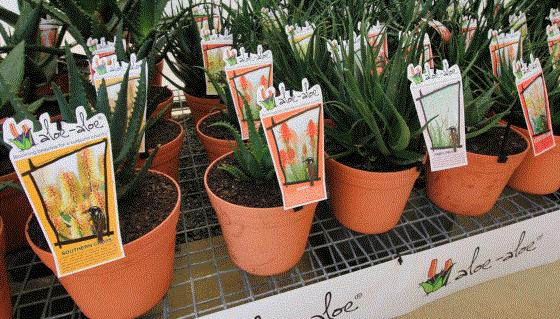
I understand that here in the U.S. and Canada, Cultivaris has the rights to them and they go under the name Blooming Aloe. Which is fine … but there’s something about “Aloe-Aloe” that made me smile.
See you next time!

Chris Beytes
Editor
GrowerTalks and Green Profit
This e-mail received by 22,421 loyal readers!
Thanks to my loyal sponsors, who help me reach the 22,421 readers of Acres Online in 66 countries! Want to be one (a sponsor, that is)? Give Paul Black a shout and he'll hook you up.